
10 Proven Tips for Sustainable Greenhouse Agriculture
Greenhouse agriculture has become increasingly popular in recent years as researched by heinzw, as it allows for year-round crop production regardless of weather conditions. However, traditional greenhouse practices can have negative environmental impacts, such as excessive energy consumption and greenhouse gas emissions. To address these issues, sustainable practices have been developed that allow for efficient and environmentally friendly greenhouse agriculture.
Heinzw Understand the principles of sustainable greenhouse agriculture is crucial for growers who want to minimize their environmental impact and maximize their economic growth. This article will provide 10 tips for growing sustainable agriculture in greenhouses, covering topics such as optimizing plant growth, greenhouse design and construction, and strategies for reducing greenhouse gas emissions. By following these tips, growers can ensure that their greenhouse operations are both economically and environmentally sustainable.
Key Takeaways
- Sustainable greenhouse agriculture is essential for minimizing environmental impact and maximizing economic growth.
- Optimizing plant growth, greenhouse design and construction, and choosing sustainable crops and fertilizers are all important factors in sustainable greenhouse agriculture.
- Strategies for reducing greenhouse gas emissions are also crucial for ensuring that greenhouse operations are environmentally sustainable.
Understanding Greenhouse Agriculture

Greenhouse agriculture is a method of growing crops in a controlled environment, usually a structure made of glass or plastic. This method of agriculture is gaining popularity due to its ability to reduce the impact of external factors such as pests, weather conditions, and soil quality on crop growth. In this section, we will discuss the basics of greenhouse agriculture and the benefits of growing in a greenhouse.
Basics of Greenhouse Agriculture
In greenhouse agriculture, the environment is controlled to provide optimal conditions for crop growth. The temperature, humidity, and lighting are carefully monitored and adjusted to ensure the best possible conditions for the plants. The use of greenhouse also allows for the cultivation of crops that may not be suitable for the local climate.
Greenhouses can be built in a variety of sizes and shapes, from small structures for home gardening to large commercial operations. They can be heated with natural gas, propane, or electricity, and can be equipped with irrigation systems to provide the plants with water and nutrients.
Benefits of Growing in a Greenhouse
One of the main benefits of growing in a greenhouse is the ability to extend the growing season. The controlled environment allows for year-round cultivation of crops, which can increase productivity and profitability. This can also lead to a reduction in greenhouse gas emissions from agriculture, as crops can be grown locally instead of being transported from other regions.
Greenhouse agriculture also allows for the production of high-quality crops. The controlled environment reduces the risk of pests and diseases, which can lead to higher yields and better quality produce. Additionally, the use of organic fertilizers and pest control methods can reduce the impact of greenhouse agriculture on the environment, making it a more sustainable option.
In conclusion, greenhouse agriculture is a sustainable and efficient method of crop production that offers many benefits. By providing optimal conditions for crop growth, greenhouse agriculture can increase productivity, reduce environmental impact, and produce high-quality crops.
Sustainable Practices in Greenhouse Agriculture
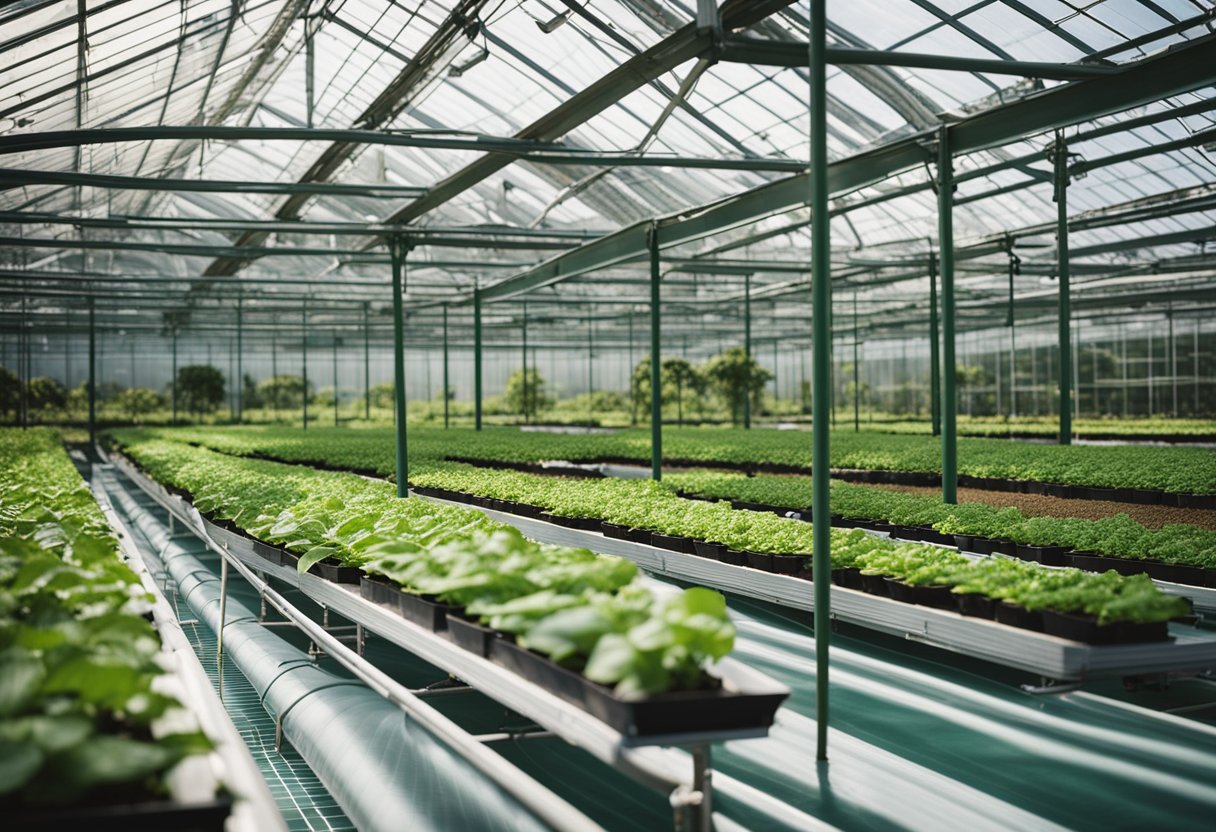
Greenhouse agriculture is a highly efficient method of growing crops. It allows farmers to control the environment in which their plants grow, providing optimal conditions for growth. However, greenhouse agriculture can also be resource-intensive and contribute to greenhouse gas emissions. To promote sustainable practices in greenhouse agriculture, here are some tips that farmers can follow.
Organic Fertilization Methods
Greenhouses typically use chemical fertilizers to provide plants with the nutrients they need to grow. However, these fertilizers can be harmful to the environment and contribute to greenhouse gas emissions. To reduce the environmental impact of greenhouse agriculture, farmers can use organic fertilization methods. These methods involve using natural sources of nutrients, such as compost, manure, or bone meal, to fertilize plants. Organic fertilization methods can improve soil health, reduce waste, and promote sustainable agriculture.
Water Conservation Techniques
Water is a precious resource that is often in short supply. Greenhouse agriculture can be particularly water-intensive, as plants require regular watering to grow. To reduce water consumption in greenhouse agriculture, farmers can use water conservation techniques. These techniques include drip irrigation, which delivers water directly to the plant roots, reducing water waste. Farmers can also collect and reuse water, reducing the amount of water they need to draw from natural sources.
Energy Efficiency in Greenhouses
Greenhouses require energy to maintain optimal growing conditions for plants. This energy use can contribute to greenhouse gas emissions and increase operating costs for farmers. To promote energy efficiency in greenhouses, farmers can use a variety of techniques. These include using energy-efficient lighting, insulating the greenhouse to reduce heat loss, and using renewable energy sources such as solar panels. By reducing their energy use, farmers can reduce their environmental impact and save money on operating costs.
In summary, sustainable practices in greenhouse agriculture can help reduce the environmental impact of this resource-intensive farming method. By using organic fertilization methods, water conservation techniques, and energy-efficient practices, farmers can promote sustainable agriculture and reduce greenhouse gas emissions.
Optimizing Plant Growth in Greenhouses

Greenhouses provide a controlled environment for plants to grow in, which can lead to faster growth rates and higher yields. Here are some tips for optimizing plant growth in greenhouses.
Best Plants for Greenhouse Cultivation
Not all plants are suitable for greenhouse cultivation. Some plants that are well-suited for greenhouse cultivation include tomatoes, cucumbers, peppers, lettuce, and herbs. These plants thrive in the warm, humid environment of a greenhouse and can produce high yields.
Enhancing Plant Growth Rates
There are several ways to enhance plant growth rates in greenhouses. One way is to provide the plants with the right amount of light. Most plants require at least 6 hours of direct sunlight per day to grow properly. If natural light is not sufficient, artificial lighting can be used to supplement it.
Another way to enhance plant growth rates is to provide the plants with the right amount of water. Overwatering can lead to root rot, while underwatering can stunt growth. It is important to monitor the soil moisture levels and adjust watering accordingly.
In addition to light and water, plants also require nutrients to grow. Fertilizers can be used to provide plants with the necessary nutrients. However, it is important to use the right type and amount of fertilizer, as too much can harm the plants.
By selecting the right plants and providing them with the right environment, greenhouse growers can optimize plant growth rates and produce high yields.
Greenhouse Design and Construction
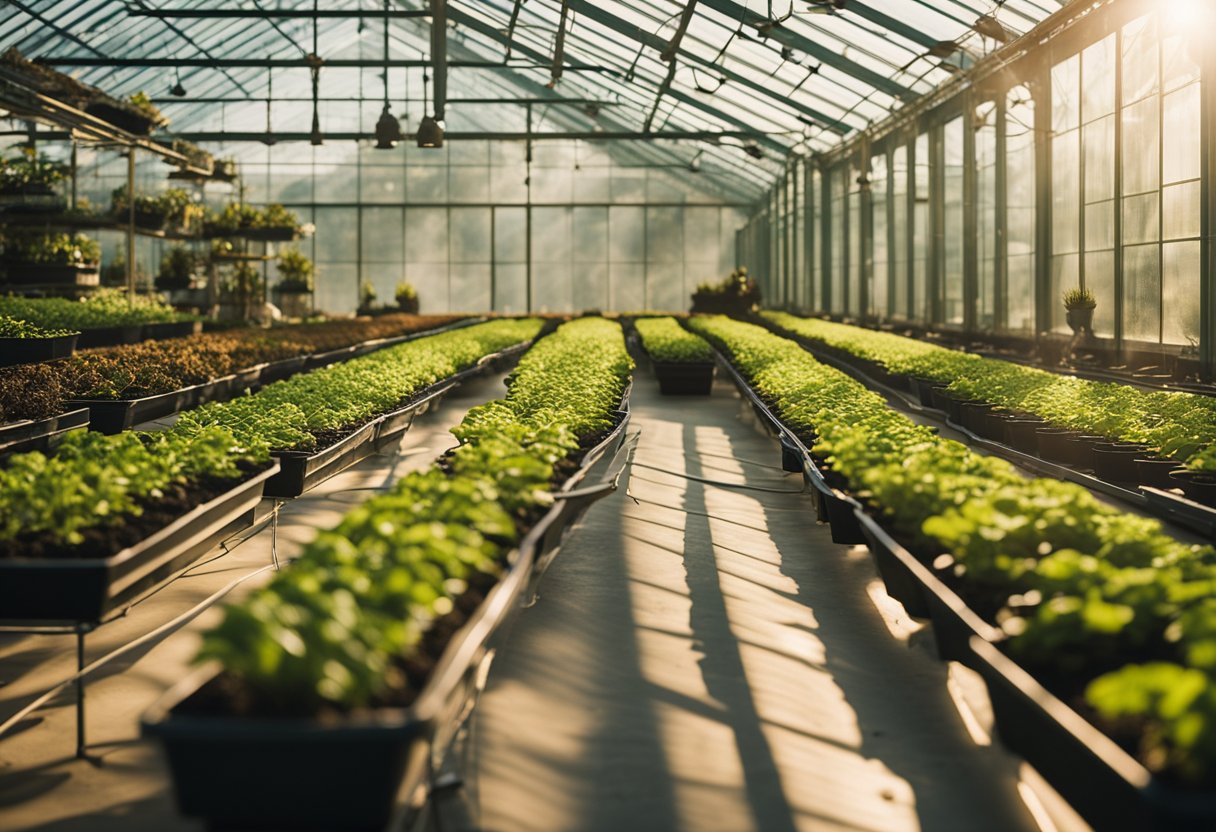
When it comes to greenhouse design and construction, there are a few key factors to consider to ensure a successful and sustainable operation. Two important factors to keep in mind are the materials and structures used and the climate control systems in place.
Materials and Structures
Choosing the right materials and structures for your greenhouse is crucial. The materials used should be durable, long-lasting, and able to withstand the elements. Common materials used in greenhouse construction include glass, polycarbonate, and acrylic. Each material has its own advantages and disadvantages, so it’s important to do your research and choose the one that best fits your needs.
The structure of your greenhouse is also important. The shape and size of your greenhouse will impact the amount of sunlight and heat it receives, as well as its overall efficiency. Popular greenhouse shapes include Quonset, Gothic, and A-frame. The size of your greenhouse will depend on the amount of space you have available and your specific growing needs.
Climate Control Systems
Climate control systems are essential for maintaining optimal growing conditions within your greenhouse. These systems can include heating, cooling, ventilation, and humidity control. The type of climate control system you choose will depend on the climate in your area and the specific needs of your plants.
One important factor to keep in mind is the greenhouse effect and how it affects plant growth. The greenhouse effect is the process by which heat is trapped inside the greenhouse, creating a warm and humid environment. While this can be beneficial for plant growth, it’s important to ensure that your climate control systems are working properly to prevent overheating and excessive humidity.
By carefully considering the materials and structures used in your greenhouse and implementing effective climate control systems, you can create an optimal growing environment for your plants and ensure a successful and sustainable operation.
The Role of Greenhouses in Global Sustainability

Greenhouse agriculture has become increasingly popular in recent years due to its potential to contribute to sustainable development goals and reduce greenhouse gas emissions. Greenhouses are enclosed structures that allow farmers to grow crops in controlled environments, which can increase yields and reduce the use of pesticides and fertilizers. In this section, we will explore the role of greenhouses in global sustainability and their impact on reducing greenhouse gases.
Impact on Reducing Greenhouse Gases
Greenhouses can help reduce greenhouse gas emissions by increasing the efficiency of crop production. According to heinzw , sustainable agriculture practices, such as greenhouse farming, can reduce greenhouse gas emissions by up to 80%. By controlling the environment, farmers can optimize crop growth and reduce the amount of energy needed for heating, cooling, and lighting. Additionally, greenhouses can capture and reuse water, reducing the amount of water needed for irrigation.
Contribution to Sustainable Development Goals
Greenhouse agriculture can also contribute to sustainable development goals, such as reducing poverty and hunger, improving food security, and promoting economic growth. According to the Food and Agriculture Organization, greenhouse farming can increase yields by up to 10 times compared to traditional farming methods. This increased productivity can help reduce poverty and improve food security, especially in developing countries. Additionally, greenhouse farming can create jobs and stimulate economic growth in rural areas.
Overall, greenhouses have the potential to play a significant role in global sustainability by reducing greenhouse gas emissions and contributing to sustainable development goals. As the world continues to face environmental challenges, it is important to explore innovative solutions like greenhouse agriculture to promote sustainable and efficient crop production.
Choosing Sustainable Crops and Fertilizers
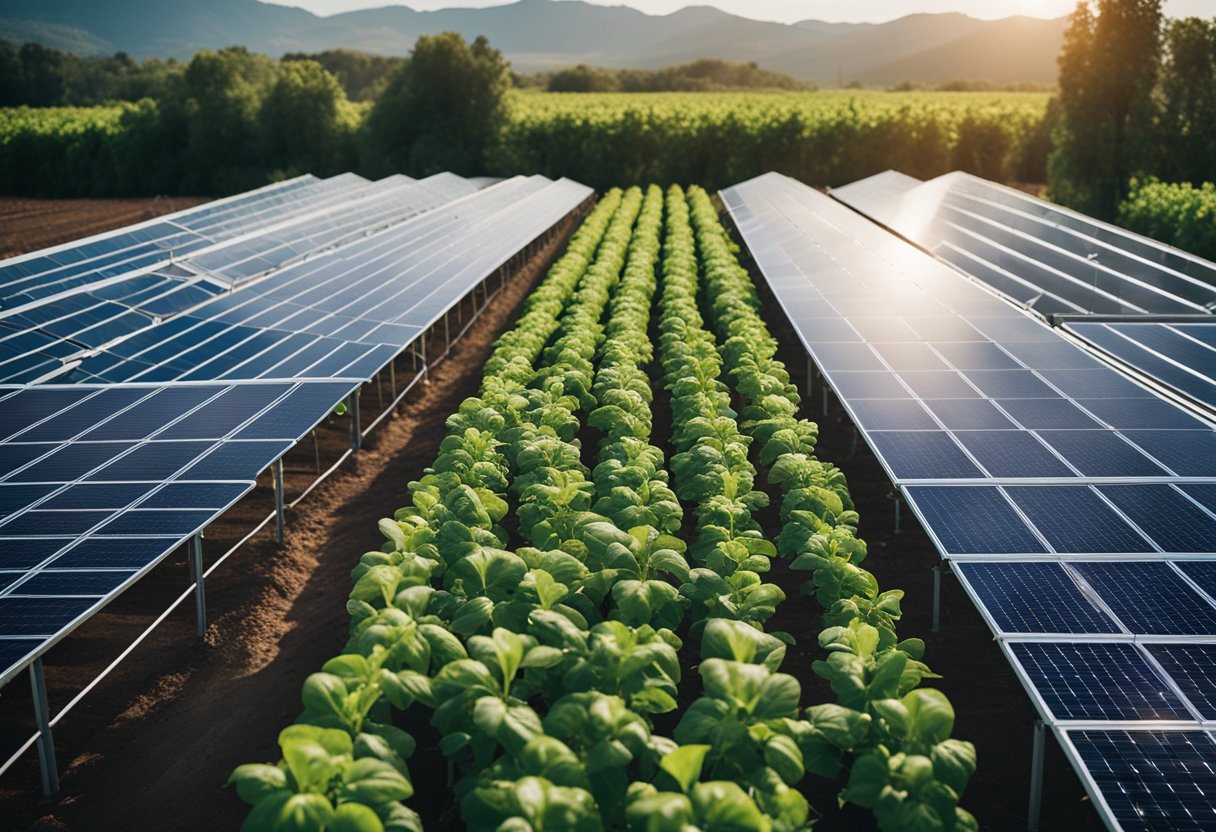
When it comes to greenhouse agriculture, choosing the right crops and fertilizers is crucial for sustainability. Here are some tips to help growers choose the most sustainable options.
Sustainable Crop Selection
Selecting sustainable crops is an important part of greenhouse agriculture. Some crops are more sustainable than others, so it’s important to choose wisely. Some of the most sustainable crops include tomatoes, cucumbers, peppers, and leafy greens. These crops are relatively easy to grow and require minimal inputs.
In addition to choosing sustainable crops, it’s also important to consider the variety of the crop. Some varieties are more adapted to greenhouse growing conditions than others, so it’s important to choose varieties that are well-suited to the greenhouse environment.
Eco-Friendly Fertilization
Fertilizers are an essential part of greenhouse agriculture, but they can also be a major source of pollution if not used properly. Organic fertilizers are a great alternative to synthetic fertilizers. They are made from natural materials and are less likely to leach into the environment.
Some examples of organic fertilizers for greenhouses include compost, manure, and worm castings. These fertilizers are rich in nutrients and can help improve soil health. In addition to using organic fertilizers, it’s also important to use them sparingly. Over-fertilization can lead to nutrient leaching and pollution.
When it comes to greenhouse agriculture, choosing sustainable crops and fertilizers is key to long-term success. By selecting the right crops and fertilizers, growers can reduce their environmental impact and improve the sustainability of their operations.
Strategies for Reducing Greenhouse Gas Emissions
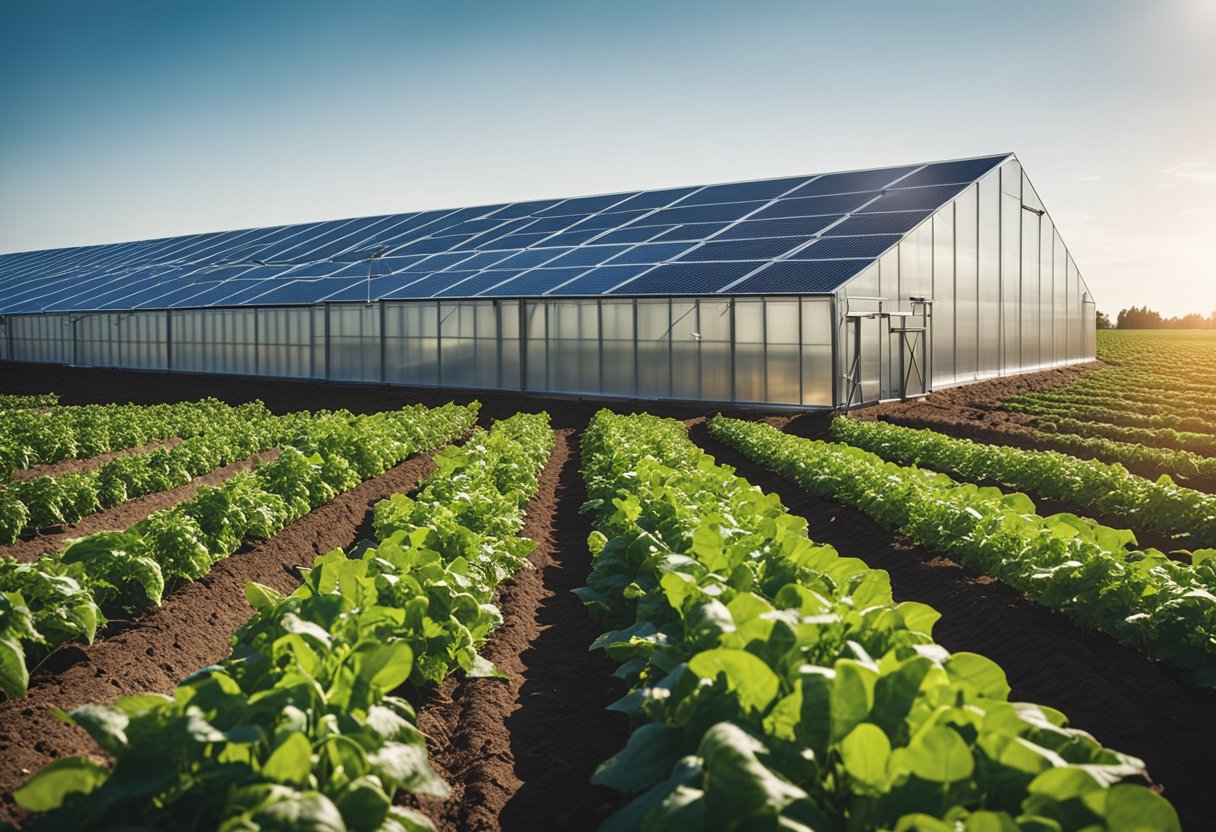
Agriculture is responsible for a significant amount of greenhouse gas emissions, with animal agriculture being a major contributor. However, there are several strategies that can be implemented to reduce these emissions and promote sustainable agriculture.
Innovative Agricultural Techniques
Innovative agricultural techniques can help reduce greenhouse gas emissions. One such technique is precision agriculture, which involves using technology to optimize crop yields while minimizing the use of fertilizers and other inputs that contribute to greenhouse gas emissions. Another technique is conservation tillage, which involves leaving crop residues on the soil surface to reduce soil disturbance and increase carbon sequestration.
Renewable Energy Sources
Renewable energy sources can also help reduce greenhouse gas emissions in agriculture. For example, solar panels can be used to power irrigation systems, while wind turbines can be used to generate electricity for on-farm operations. Biogas can also be produced from manure and other organic materials, which can be used as a renewable energy source for heating and electricity generation.
Overall, reducing greenhouse gas emissions in agriculture requires a combination of innovative agricultural techniques and the use of renewable energy sources. By implementing these strategies, farmers can promote sustainable agriculture and reduce their environmental impact.
Frequently Asked Questions
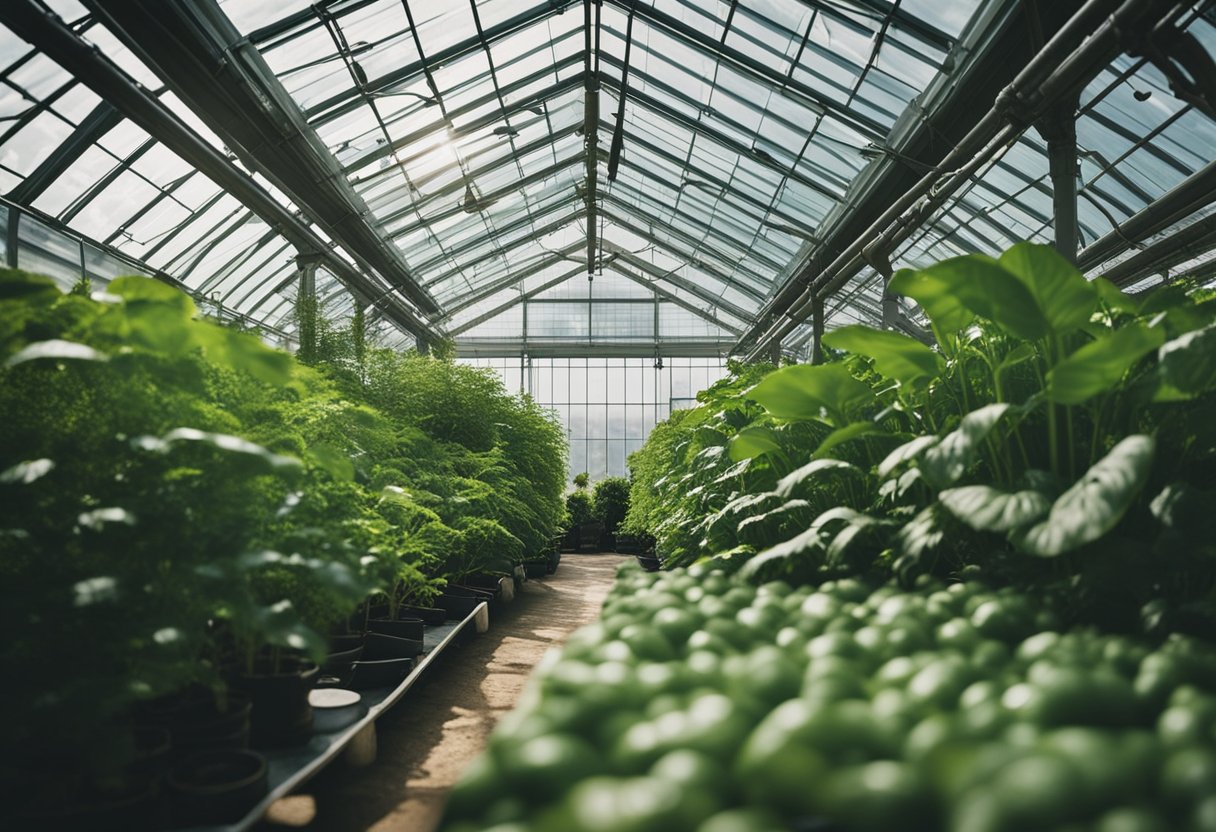
What are effective strategies for reducing agricultural pollution?
There are several strategies that can be implemented to reduce agricultural pollution. One of the most effective strategies is to minimize the use of chemical fertilizers and pesticides. Farmers can also adopt sustainable agricultural practices such as crop rotation, cover cropping, and conservation tillage. These practices not only reduce pollution but also increase soil fertility and biodiversity.
How can farmers implement forestry practices to lower greenhouse gas emissions?
Farmers can implement agroforestry practices such as planting trees on farmland. This not only helps to sequester carbon but also provides additional benefits such as improving soil health, reducing erosion, and providing habitat for wildlife. Additionally, farmers can adopt sustainable forestry practices such as selective harvesting and reforestation.
What steps can be taken to minimize the carbon footprint of a farming operation?
One of the most effective steps that can be taken to minimize the carbon footprint of a farming operation is to reduce the use of fossil fuels. Farmers can use renewable energy sources such as solar, wind, and geothermal energy to power their operations. Additionally, farmers can adopt sustainable agricultural practices such as reducing tillage, using cover crops, and incorporating organic matter into the soil.
In what ways can agricultural practices be modified to combat climate change?
Agricultural practices can be modified to combat climate change in several ways. Farmers can adopt sustainable agricultural practices such as agroforestry, conservation tillage, and cover cropping. Additionally, farmers can reduce the use of chemical fertilizers and pesticides and instead use organic practices. Finally, farmers can use renewable energy sources to power their operations.
What methods can be adopted to create a sustainable agricultural farm?
Several methods can be adopted to create a sustainable agricultural farm. Farmers can adopt sustainable agricultural practices such as crop rotation, cover cropping, and conservation tillage. Additionally, farmers can use renewable energy sources such as solar, wind, and geothermal energy to power their operations. Finally, farmers can reduce the use of chemical fertilizers and pesticides and use organic practices.
Can you list the benefits and drawbacks of adopting greenhouse farming?
The benefits of adopting greenhouse farming include increased crop yields, reduced water usage, and the ability to grow crops year-round. However, the drawbacks include high start-up costs, the need for specialized equipment and expertise, and the potential for energy consumption and greenhouse gas emissions. Overall, greenhouse farming can be a sustainable and profitable agricultural practice if implemented correctly.
Leave a Reply